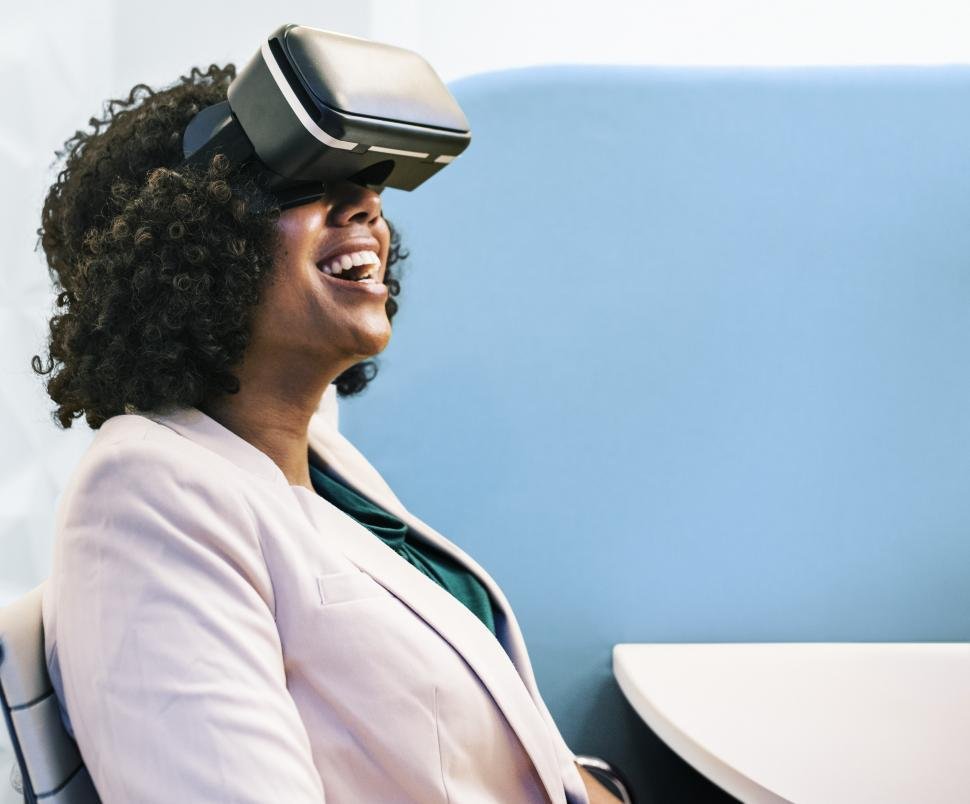As the world continues to adapt to the ever-evolving landscape of remote work, the boundaries of traditional office spaces are being shattered by the emergence of virtual reality (VR) technology. Imagine stepping into a virtual conference room, surrounded by colleagues from different corners of the globe, all collaborating seamlessly on a project. With VR, the limitations of physical distance are transcended, allowing professionals to connect, communicate, and work together in a virtual realm that feels remarkably real. In this article, we will explore the exciting possibilities of using virtual reality for remote work, uncovering the potential benefits, challenges, and practical tips to make the most of this groundbreaking technology. So, fasten your virtual seatbelts and get ready to embark on a journey into the future of work!
Table of Contents
- The Power of Virtual Reality in Remote Work
- Enhancing Collaboration and Communication through Virtual Reality
- Creating a Productive Virtual Workspace for Remote Teams
- Overcoming Challenges and Maximizing Efficiency in Remote Work with Virtual Reality
- Best Practices for Incorporating Virtual Reality into Remote Work
- Q&A
- In Summary

The Power of Virtual Reality in Remote Work
Virtual reality (VR) has revolutionized the way we work remotely, offering a multitude of benefits and opportunities. One of the most significant advantages of VR in remote work is its ability to create a sense of presence and immersion, allowing individuals to feel as if they are physically present in a different location. This can be particularly valuable for team collaboration, as it enables remote workers to engage in real-time interactions and discussions, fostering a stronger sense of connection and teamwork.
Moreover, VR provides a unique platform for training and skill development. Through virtual simulations and scenarios, employees can enhance their knowledge and expertise in a safe and controlled environment. This not only saves time and resources but also enables individuals to practice and refine their skills without the need for physical equipment or travel.
Additionally, VR can enhance productivity by eliminating distractions and creating a dedicated workspace within the virtual environment. With customizable virtual offices and workstations, remote workers can create an environment that suits their preferences and promotes focus. Furthermore, VR can offer a seamless integration of tools and applications, allowing individuals to access and manipulate digital content with ease.
- Immersive collaboration and real-time interactions
- Efficient training and skill development through virtual simulations
- Enhanced productivity with customizable virtual workspaces
- Seamless integration of tools and applications
In conclusion, cannot be underestimated. It has the potential to transform the way we collaborate, learn, and work, providing a dynamic and engaging experience for remote workers. As technology continues to advance, the possibilities for VR in remote work are limitless, opening up new avenues for innovation and efficiency.

Enhancing Collaboration and Communication through Virtual Reality
Virtual reality (VR) technology has revolutionized the way we collaborate and communicate, breaking down barriers of distance and time. With VR, teams can now come together in a shared virtual space, regardless of their physical locations, fostering a sense of presence and enhancing collaboration like never before.
Imagine being able to hold virtual meetings where participants can interact with each other and their surroundings in a realistic and immersive way. VR enables this by providing a 3D environment where users can see, hear, and even touch virtual objects, creating a truly engaging and interactive experience. Whether it’s brainstorming ideas, reviewing designs, or conducting training sessions, VR allows teams to work together seamlessly, boosting productivity and efficiency.
Furthermore, VR offers a range of communication tools that facilitate effective collaboration. From voice chat and instant messaging to gesture-based interactions, users can communicate and share ideas effortlessly. Additionally, VR platforms often provide features like screen sharing and whiteboarding, enabling teams to visualize concepts and work on projects collectively. By leveraging these tools, teams can foster creativity, streamline workflows, and ultimately achieve better results.
Embracing virtual reality technology opens up a world of possibilities for collaboration and communication. It transcends physical limitations, enabling teams to connect and work together in ways that were previously unimaginable. As VR continues to evolve, we can expect even more innovative solutions that will reshape the way we collaborate and communicate in the future.

Creating a Productive Virtual Workspace for Remote Teams
When it comes to remote teams, creating a productive virtual workspace is essential for collaboration and efficiency. Here are some tips to help you establish an environment that fosters teamwork and success:
- Choose the right communication tools: Utilize reliable communication platforms that allow for seamless interaction between team members. Whether it’s video conferencing, instant messaging, or project management tools, ensure that everyone has access to the necessary resources.
- Set clear expectations: Clearly define roles, responsibilities, and deadlines to avoid confusion and promote accountability. Establishing guidelines for availability and response times can also help maintain a sense of structure and ensure timely communication.
- Create a virtual watercooler: Encourage informal interactions by setting up virtual spaces where team members can connect on a personal level. This could be a dedicated chat channel for non-work-related conversations or organizing virtual team-building activities to foster camaraderie.
- Promote work-life balance: Remote work can blur the boundaries between personal and professional life. Encourage your team to establish healthy routines, take breaks, and disconnect after work hours. Supporting their well-being will contribute to their overall productivity and satisfaction.
- Provide regular feedback and recognition: Remote teams thrive on feedback. Regularly acknowledge and appreciate the efforts of your team members. Constructive feedback helps them grow professionally and boosts morale.
By implementing these strategies, you can create a virtual workspace that promotes collaboration, engagement, and productivity for your remote team.
Overcoming Challenges and Maximizing Efficiency in Remote Work with Virtual Reality
Remote work has become increasingly prevalent in today’s digital age, allowing individuals to work from the comfort of their own homes or anywhere in the world. However, it also presents unique challenges that can hinder productivity and collaboration. Fortunately, virtual reality (VR) technology has emerged as a powerful tool for overcoming these obstacles and maximizing efficiency in remote work.
One of the main challenges of remote work is the lack of face-to-face interaction, which can lead to feelings of isolation and hinder effective communication. VR offers a solution by providing a virtual environment where team members can meet and collaborate as if they were in the same room. With the ability to see and interact with each other in a realistic 3D space, VR enhances the sense of presence and fosters better teamwork.
Moreover, VR can also streamline training and onboarding processes for remote employees. Through immersive simulations and interactive modules, new hires can quickly grasp complex concepts and gain hands-on experience without the need for physical presence. This not only saves time and resources but also ensures that remote workers are equipped with the necessary skills to perform their tasks efficiently.
- Enhanced collaboration and communication through realistic virtual environments
- Streamlined training and onboarding processes for remote employees
- Increased productivity and efficiency in remote work settings
In conclusion, virtual reality has the potential to revolutionize remote work by overcoming challenges and maximizing efficiency. By leveraging VR technology, remote teams can enhance collaboration, streamline training, and ultimately achieve higher levels of productivity. As the world continues to embrace remote work, integrating virtual reality into the workflow will undoubtedly become a game-changer for businesses and individuals alike.
Best Practices for Incorporating Virtual Reality into Remote Work
When it comes to remote work, virtual reality (VR) has emerged as a powerful tool that can enhance collaboration, productivity, and engagement. To make the most out of incorporating VR into your remote work setup, here are some best practices to keep in mind:
- Choose the right VR platform: There are various VR platforms available, each with its own features and capabilities. Research and select a platform that aligns with your specific remote work needs and goals.
- Provide necessary training: Not everyone may be familiar with using VR technology. Ensure that your team receives proper training and support to effectively utilize VR tools and applications.
- Establish clear guidelines: Set guidelines and expectations for using VR in remote work. Define when and how VR should be used, ensuring it complements existing workflows and doesn’t become a distraction.
- Encourage collaboration: VR can facilitate immersive collaboration experiences. Encourage team members to use VR for virtual meetings, brainstorming sessions, or even virtual team-building activities to foster a sense of togetherness.
- Consider hardware requirements: Depending on the VR platform chosen, specific hardware may be required. Ensure that your team has access to the necessary equipment and that it meets the recommended specifications.
- Maintain a balance: While VR can be a valuable addition to remote work, it’s important to strike a balance. Avoid over-reliance on VR and ensure that it complements other communication and collaboration tools already in use.
By following these best practices, you can effectively incorporate virtual reality into your remote work environment, unlocking new possibilities for collaboration and productivity.
Q&A
How can virtual reality enhance remote work?
Virtual reality can enhance remote work by providing a more immersive and engaging experience. It allows remote workers to feel like they are physically present in a shared virtual space, enabling better collaboration, communication, and productivity.
What are some practical applications of virtual reality in remote work?
Virtual reality can be used for virtual meetings, training sessions, and presentations. It can also create virtual office spaces where remote workers can interact with each other, fostering a sense of community and reducing feelings of isolation.
What equipment is needed to use virtual reality for remote work?
To use virtual reality for remote work, you will need a virtual reality headset, such as Oculus Rift or HTC Vive, and a compatible computer or gaming console. Additionally, you may need specific software or applications depending on the virtual reality platform you choose.
Are there any drawbacks to using virtual reality for remote work?
Some drawbacks of using virtual reality for remote work include the initial cost of purchasing the necessary equipment and potential discomfort or motion sickness for some users. Additionally, not all job roles or tasks may benefit from virtual reality, so it’s important to assess its suitability for your specific work needs.
How can virtual reality improve team collaboration in remote work?
Virtual reality can improve team collaboration in remote work by creating a shared virtual space where team members can interact and collaborate in real-time. It allows for more natural communication, body language cues, and the ability to work together on virtual objects or documents.
Can virtual reality help with onboarding new remote employees?
Yes, virtual reality can be a valuable tool for onboarding new remote employees. It can provide immersive training experiences, simulate real-life scenarios, and allow new employees to virtually meet and interact with their colleagues, helping them feel more connected and integrated into the team.
What are some potential future developments in virtual reality for remote work?
Future developments in virtual reality for remote work may include advancements in haptic feedback technology, allowing users to feel virtual objects, and improved graphics and resolution for more realistic experiences. Additionally, the integration of artificial intelligence and virtual assistants could further enhance productivity and efficiency in remote work environments.
Future Outlook
As we bid farewell to the realms of traditional office spaces and embrace the boundless possibilities of remote work, virtual reality emerges as the ultimate catalyst for this transformative journey. With a touch of innovation and a sprinkle of imagination, we have explored the myriad ways in which this immersive technology can revolutionize the way we work, connect, and collaborate from the comfort of our own homes.
Through the lens of virtual reality, the boundaries of physical distance dissolve into mere pixels, paving the way for a new era of remote work. No longer confined by the limitations of geography, we can now traverse the globe with a simple flick of a wrist, attending meetings in Tokyo, brainstorming sessions in Paris, and team-building exercises in Rio de Janeiro, all without leaving our living rooms.
But virtual reality is not just a tool for teleportation; it is a gateway to enhanced productivity and seamless collaboration. With virtual meeting rooms that mirror the ambiance of a traditional boardroom, complete with interactive whiteboards and lifelike avatars, we can engage in meaningful discussions and brainstorming sessions as if we were physically present. The barriers of distance and time zones crumble, allowing us to connect with colleagues and clients across the globe, fostering a sense of unity and camaraderie that transcends physical boundaries.
Moreover, virtual reality empowers us to unleash our creativity and explore new frontiers in remote work. From designing virtual office spaces that reflect our unique personalities to customizing our avatars with a touch of whimsy, we can infuse our virtual work environments with a sense of individuality and inspiration. The possibilities are limited only by our imagination, as we redefine what it means to work in a world where the physical and the virtual seamlessly intertwine.
As we embark on this virtual odyssey, it is crucial to remember that while virtual reality offers a plethora of opportunities, it is not a panacea for all the challenges of remote work. It is merely a tool, a conduit through which we can bridge the gap between physical separation and meaningful connection. It is up to us, the remote workforce of the future, to harness the power of virtual reality responsibly and creatively, ensuring that it enhances our productivity, nurtures our relationships, and ultimately enriches our lives.
So, dear reader, as you step into the realm of virtual reality for remote work, let your imagination soar, your creativity flourish, and your connections thrive. Embrace this brave new world with open arms, for the possibilities are as vast as the digital landscapes that await you. Together, let us redefine the boundaries of work, one virtual step at a time.
As an affiliate, my content may feature links to products I personally use and recommend. By taking action, like subscribing or making a purchase, you’ll be supporting my work and fueling my taco cravings at the same time. Win-win, right?
Want to read more? Check out our Affiliate Disclosure page.